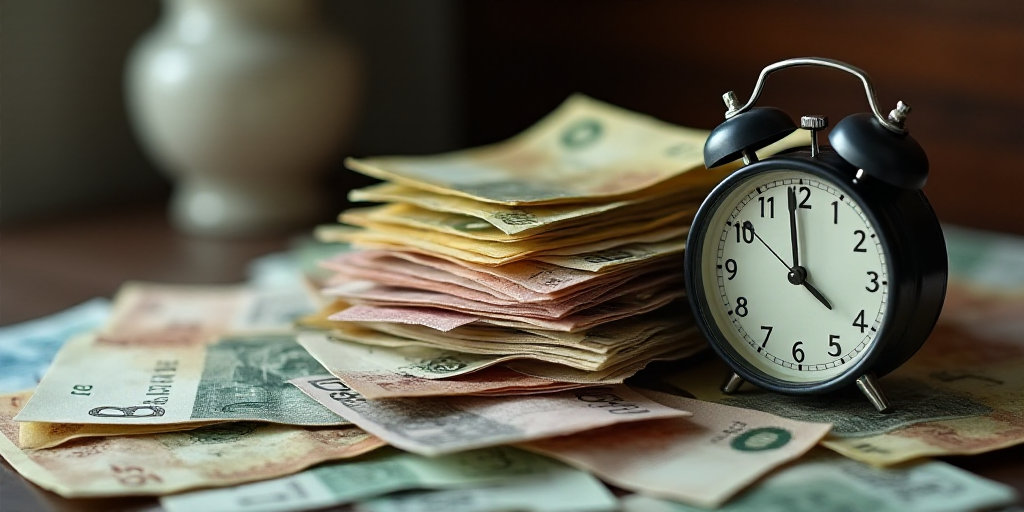Background on Claudia Sheinbaum and Her Presidency
Claudia Sheinbaum assumed the presidency in Mexico, and her tenure has seen significant changes in various sectors, including the country’s currency performance. Understanding her role is crucial to grasping the context of the Mexican peso’s recent strength.
Claudia Sheinbaum is a prominent Mexican politician and former head of government for Mexico City. In December 2018, she was appointed as the head of the Secretariat of Environmental Affairs and Climate Change (SEDEMA) by President Andrés Manuel López Obrador. In June 2021, she was elected as the first female mayor of Mexico City, continuing her influential role in shaping policies for the capital city and, by extension, Mexico.
Mexican Peso’s Recent Strength
The Mexican peso has reached its best level since Claudia Sheinbaum took office, appreciating by 2.30%. This improvement is largely due to the dollar’s weakness amidst the ongoing trade war between the United States and China.
According to Banco de México (Banxico), the Mexican currency closed at 19.2398 pesos per dollar on Friday, marking a 0.37% or 7.23 centavo appreciation. This places the exchange rate at its best closing since September 17, 2024, when it was recorded at 19.1399 pesos.
Since the beginning of Claudia Sheinbaum’s term, the exchange rate peaked at 21.8829 units on December 31, 2024.
International Dollar Index and Its Impact
The Intercontinental Exchange’s Dollar Index (DXY), which measures the US dollar against a basket of six reference currencies, has displayed erratic behavior and dropped 2.06% to 99.10 points.
Among the most appreciated currencies during this period are the Russian ruble (17.05%), Swedish krona (7.21%), Norwegian krone (4.61%), Swiss franc (5.46%), euro (4.75%), Brazilian real (7.14%), Danish krone (2.67%), and Japanese yen (0.50%).
Factors Affecting the Peso’s Performance
In 2024, the Mexican peso weakened against the US dollar due to the resilience of the American economy, which exceeded the growth expectations set by the International Monetary Fund (IMF). This was further compounded by factors such as reduced global demand for risky assets, increased geopolitical risks, and a decline in commodity prices.
These external factors deepened the depreciation of emerging market currencies, including Mexico’s peso.
Experts’ Outlook on the Peso
Monex experts predict that, in the remainder of 2025, the Mexican peso will continue to experience high exchange rate volatility due to factors like the trade war and risk aversion.
Gabriela Siller, director of Analysis at Banco Base, emphasized that the trade war between China and the United States persists, posing a tariff threat to Mexico. She anticipates that market attention will focus on the review of the T-MEC, officially scheduled for July 2026 but potentially advancing sooner.
Additional risk-averse factors include the possibility of new trade disputes, judicial elections, and potential credit rating cuts that could affect peso speculation and create upward pressure on the exchange rate.
Increased Bullish Positions on the Peso
Speculative net long positions for the Mexican peso have increased by 404% in the Chicago futures market since Claudia Sheinbaum assumed power.
From the week ending September 27, 2024, to the week ending May 25, 2025, speculative net positions anticipating peso appreciation rose from 62,500 contracts to 12,400 contracts.
Felipe Mendoza, ATFX LATAM’s markets analyst, highlighted that the Mexican peso remains an attractive emerging market currency for carry trade strategies due to its interest rate differential and relative macroeconomic stability.
Key Questions and Answers
- Who is Claudia Sheinbaum, and why is her presidency relevant? Claudia Sheinbaum is a prominent Mexican politician who has served as the head of government for Mexico City and holds significant influence over policy-making in Mexico. Her presidency is relevant because it coincides with the Mexican peso’s recent performance.
- What factors have contributed to the Mexican peso’s appreciation? The peso has appreciated due to the dollar’s international weakness, stemming from the trade war between the United States and China. Additionally, factors like reduced global demand for risky assets, increased geopolitical risks, and declining commodity prices have deepened the depreciation of emerging market currencies.
- What do experts predict for the Mexican peso’s future performance? Experts anticipate continued high exchange rate volatility due to factors like the ongoing trade war and risk aversion. Potential risks include new trade disputes, judicial elections, and credit rating cuts.
- Why are speculative positions on the Mexican peso increasing? Speculative net long positions for the Mexican peso have risen by 404% in the Chicago futures market since Claudia Sheinbaum assumed power, driven by the peso’s attractiveness for carry trade strategies due to its interest rate differential and relative macroeconomic stability.






